6 Art Therapy Techniques for Eating Disorders: A Path to Healing and Recovery
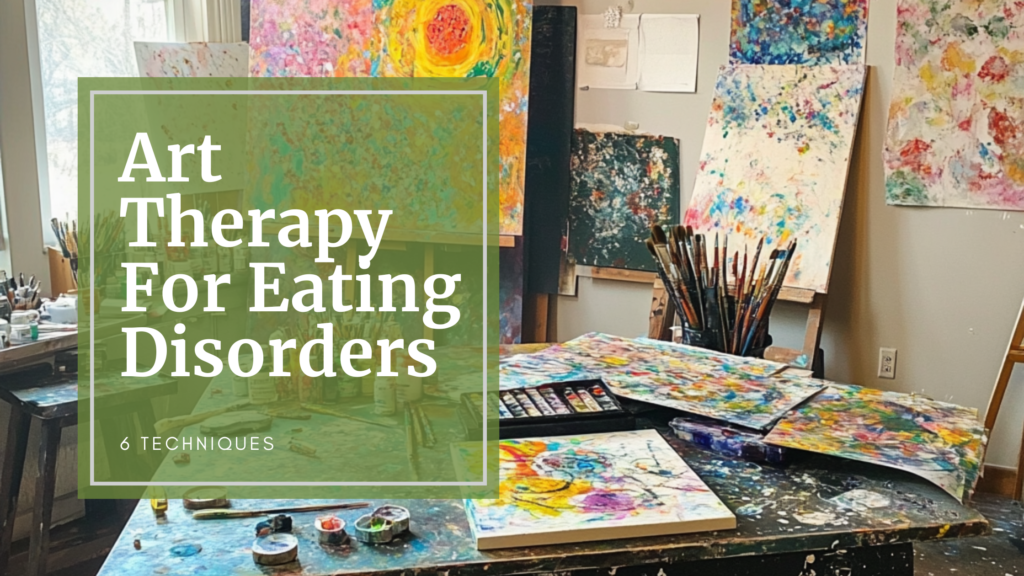
Table of Contents
- Introduction to Art Therapy for Eating Disorders
- Benefits of Art Therapy in Eating Disorder Treatment
- 6 Effective Art Therapy Techniques for Eating Disorders
- Case Studies: Art Therapy Success Stories
- Integrating Art Therapy into Comprehensive Treatment Plans
Introduction to Art Therapy for Eating Disorders
Eating disorders are complex mental health conditions that affect millions of people worldwide. These disorders, including anorexia nervosa, bulimia nervosa, and binge eating disorder, can have devastating effects on both physical and emotional well-being. As healthcare professionals and researchers continue to explore effective treatment options, art therapy has emerged as a powerful tool in the journey towards recovery.
Art therapy for eating disorders is a specialized form of psychotherapy that uses creative processes to help individuals express emotions, explore underlying issues, and develop healthier coping mechanisms. This approach recognizes that sometimes, words alone are not enough to convey the deep-seated struggles associated with eating disorders. By engaging in artistic activities, patients can tap into their subconscious, confront difficult emotions, and work towards healing in a non-threatening environment.
The Art Therapy Practitioner Certification Course offers comprehensive training in this field, equipping professionals with the skills needed to effectively use art therapy in treating eating disorders. This course covers a wide range of techniques and approaches, ensuring that practitioners are well-prepared to address the unique challenges faced by individuals struggling with eating disorders.
Understanding the Role of Art in Healing
Art has long been recognized for its therapeutic qualities. In the context of eating disorders, art therapy provides a unique avenue for self-expression and self-discovery. It allows individuals to externalize their internal struggles, making them more tangible and easier to address. Through various artistic mediums such as painting, drawing, sculpture, and collage, patients can:
- Express emotions that are difficult to verbalize
- Explore body image issues in a safe, non-judgmental space
- Develop a stronger sense of self and identity
- Process traumatic experiences that may contribute to the eating disorder
- Build self-esteem and confidence
The introduction to art therapy course provides a solid foundation for understanding these principles and their application in treating eating disorders.
The Science Behind Art Therapy
While art therapy may seem intuitive, there is a growing body of scientific research supporting its effectiveness in treating eating disorders. Studies have shown that engaging in creative activities can:
- Reduce anxiety and depression, common comorbidities in eating disorders
- Increase self-awareness and emotional regulation
- Improve overall quality of life
- Enhance cognitive functioning and problem-solving skills
A study published in the Journal of Eating Disorders found that art therapy interventions led to significant improvements in body image and self-esteem among patients with anorexia nervosa. This research underscores the potential of art therapy as a valuable component of comprehensive eating disorder treatment.
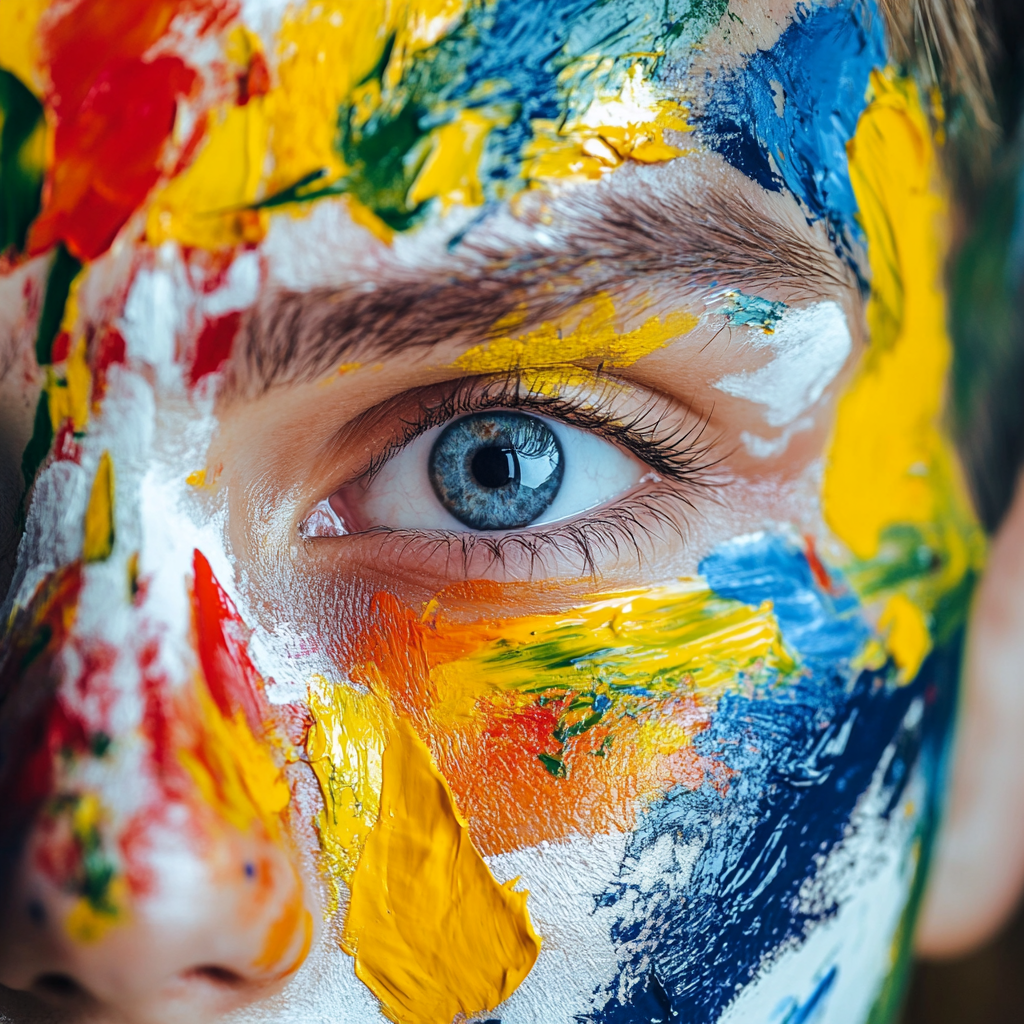
Benefits of Art Therapy in Eating Disorder Treatment
Art therapy offers numerous benefits for individuals struggling with eating disorders. These benefits extend beyond the immediate therapeutic session, often providing long-lasting tools for recovery and personal growth. Let’s explore some of the key advantages of incorporating art therapy into eating disorder treatment:
1. Non-Verbal Expression of Emotions
One of the most significant benefits of art therapy is its ability to facilitate non-verbal expression. Many individuals with eating disorders struggle to articulate their feelings and experiences verbally. Art provides an alternative means of communication, allowing patients to express complex emotions, fears, and desires through visual representation.
For example, a patient might create a collage representing their relationship with food, using images and colors to convey feelings of anxiety, control, or comfort. This visual representation can serve as a starting point for deeper discussions in therapy sessions.
2. Improved Body Image and Self-Perception
Distorted body image is a common feature of many eating disorders. Art therapy can help individuals explore and challenge these perceptions in a safe, controlled environment. Through activities like self-portraiture or body mapping, patients can confront their body image issues and work towards developing a more realistic and positive self-perception.
3. Stress Reduction and Relaxation
The act of creating art can be inherently calming and meditative. For individuals with eating disorders, who often experience high levels of stress and anxiety, art therapy provides a much-needed outlet for relaxation. Engaging in artistic activities can help reduce cortisol levels (the stress hormone) and promote a sense of calm and well-being.
Techniques such as mandala drawing or painting to music, as explored in the art therapy for addiction recovery blog, can be particularly effective in promoting relaxation and mindfulness.
4. Enhanced Self-Awareness and Insight
Art therapy encourages introspection and self-reflection. As individuals create and analyze their artwork, they often gain new insights into their thoughts, feelings, and behaviors. This increased self-awareness can be crucial in identifying triggers, understanding patterns, and developing healthier coping mechanisms.
For instance, a patient might create a series of artworks over time, reflecting their journey through recovery. Reviewing these pieces can provide valuable insights into their progress and areas that may need further attention.
5. Empowerment and Control
Eating disorders often stem from feelings of powerlessness and a need for control. Art therapy provides a safe space where individuals can make choices, take risks, and express themselves freely. This sense of agency in the creative process can translate to increased feelings of empowerment in other areas of life, including recovery.
The art therapy practitioner certification course delves deeper into how to foster this sense of empowerment through various art therapy techniques.
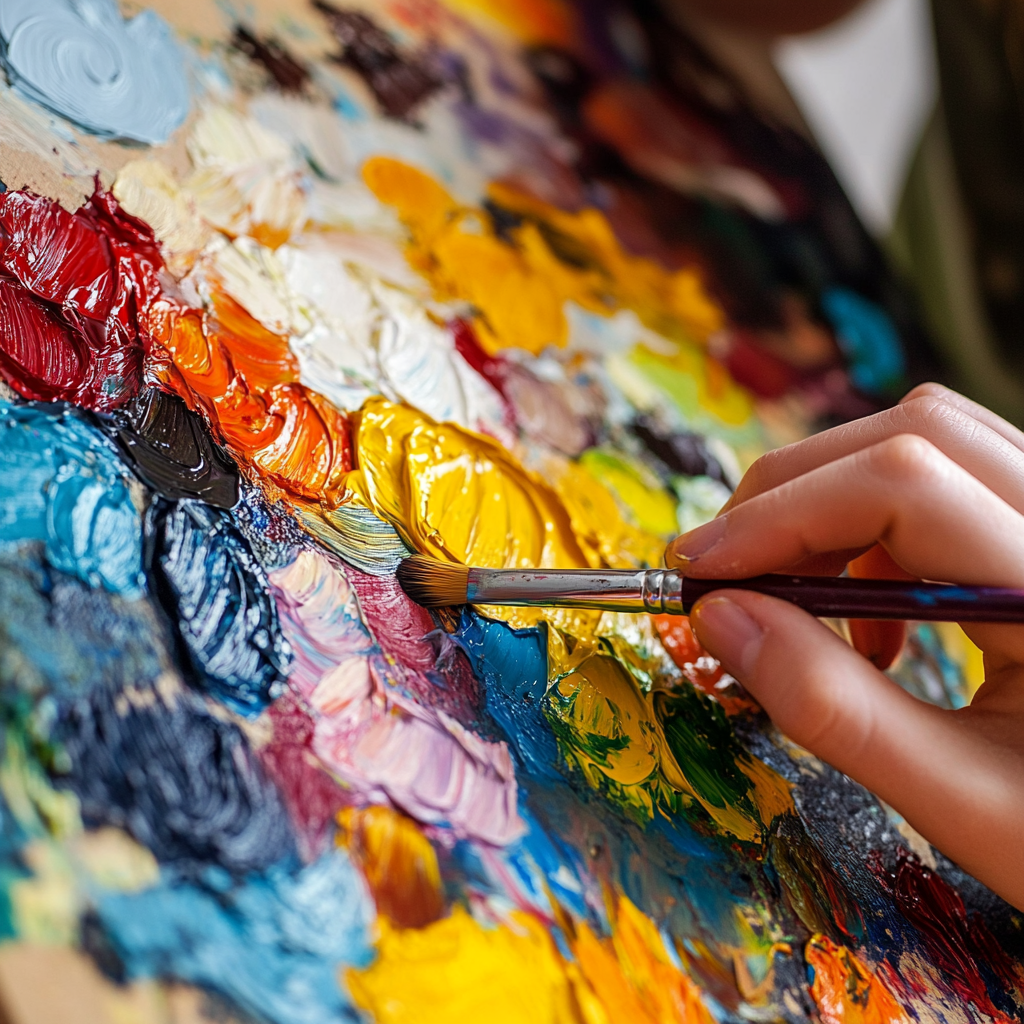
Effective Art Therapy Techniques for Eating Disorders
Art therapy encompasses a wide range of techniques and activities, each offering unique benefits for individuals with eating disorders. Here are some of the most effective art therapy techniques used in eating disorder treatment:
1. Body Mapping
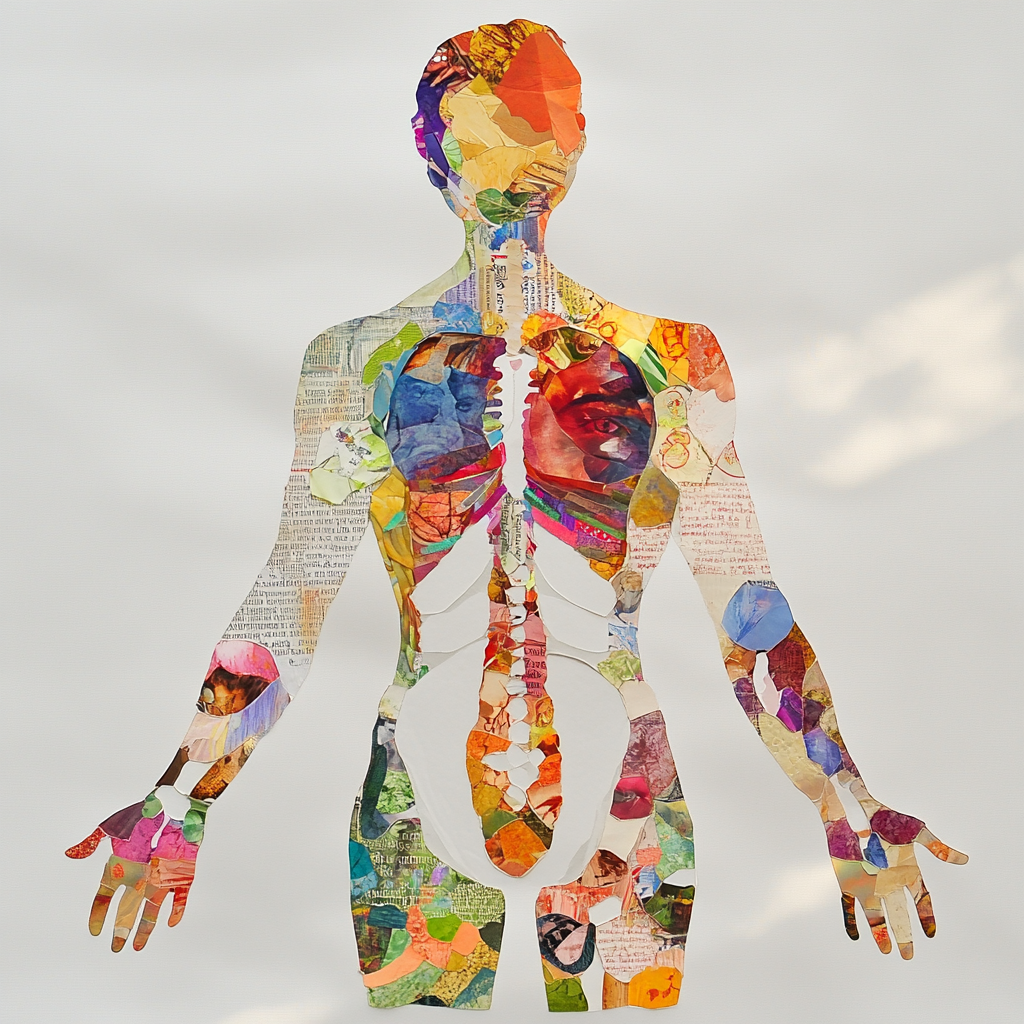
Body mapping is a powerful technique that involves creating a life-size outline of the body and filling it with colors, symbols, and words that represent emotions, experiences, and beliefs about oneself. This technique can be particularly effective in addressing body image issues and helping individuals reconnect with their physical selves.
In a case study from The Meadows Ranch, a residential treatment center for eating disorders, a patient named Sarah used body mapping to explore her feelings about her body. Initially, Sarah filled her body outline with dark colors and negative words. Over the course of her treatment, she gradually introduced more positive elements, reflecting her evolving self-perception. This visual representation of her progress became a powerful tool in her recovery journey. You can learn more about The Meadows Ranch’s approach at https://www.meadowsranch.com.
2. Mandala Drawing
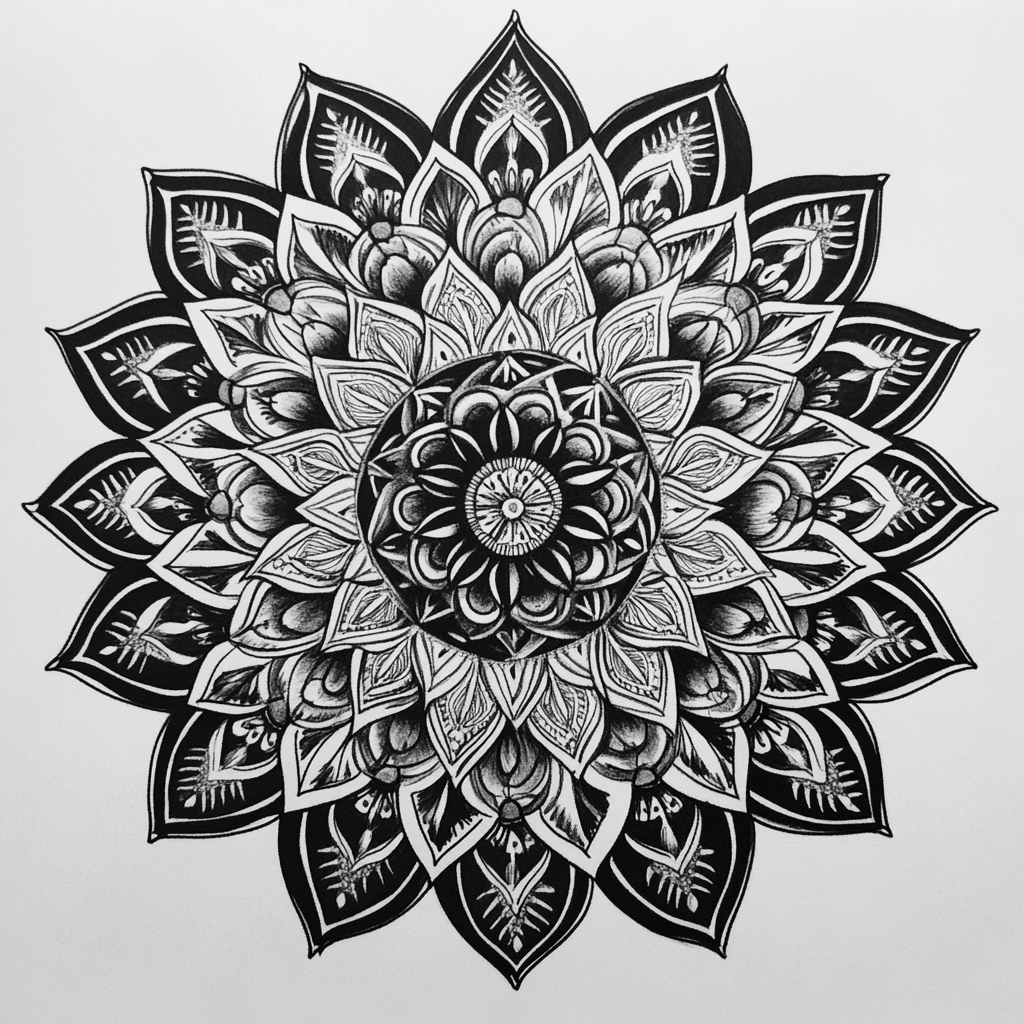
Mandalas are circular designs that have been used for centuries in various cultures for meditation and healing. In art therapy, creating mandalas can help individuals with eating disorders focus their attention, reduce anxiety, and promote relaxation.
The repetitive, symmetrical nature of mandala drawing can induce a state of flow, providing a respite from obsessive thoughts about food and body image. This technique is often used in conjunction with mindfulness practices to enhance its therapeutic benefits.
3. Collage Making
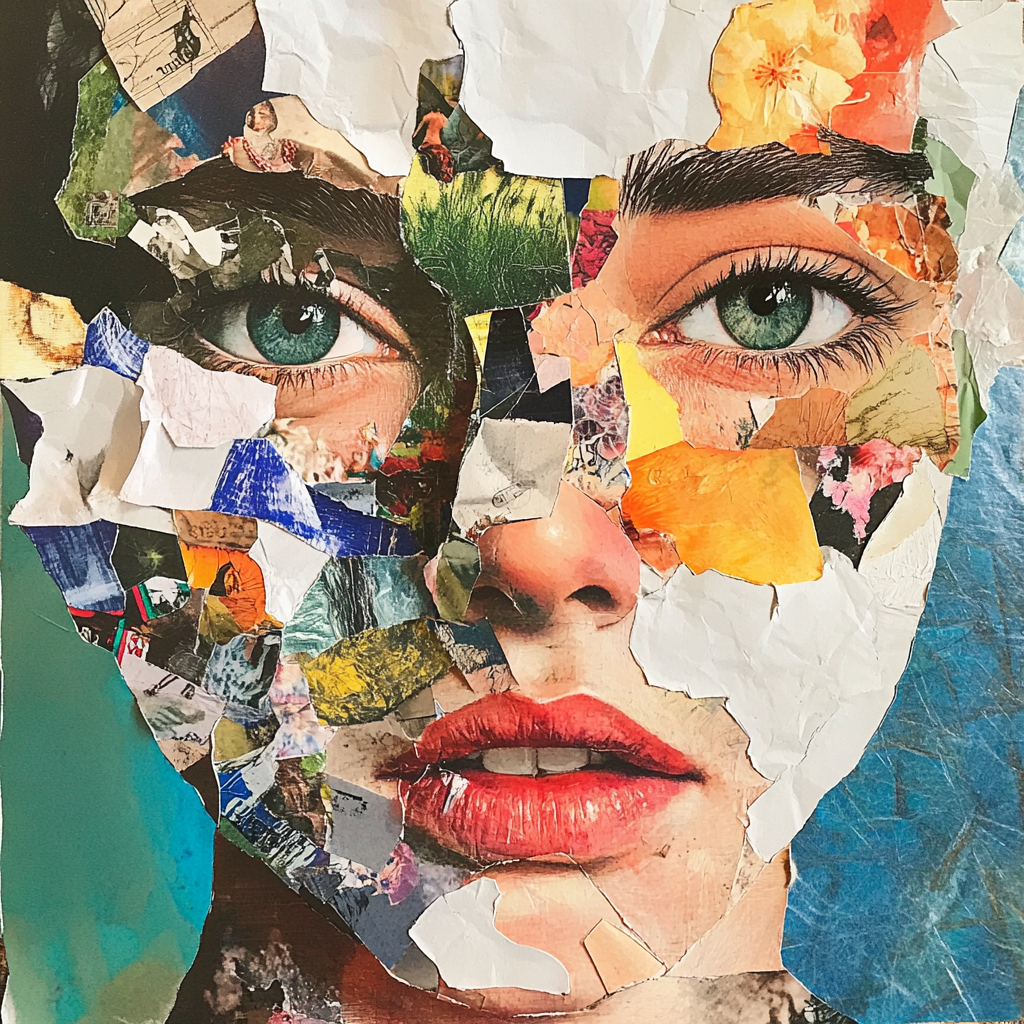
Collage making involves selecting and arranging images, textures, and words from various sources to create a cohesive artwork. This technique can be particularly useful for individuals who feel intimidated by drawing or painting. Collage making allows patients to explore complex emotions and experiences related to their eating disorder in a less direct, more metaphorical way.
For example, a patient might create a collage representing their ideal self or their vision of recovery. This activity can help clarify goals and aspirations, providing motivation for the recovery process. The 10 art therapy exercises for trauma recovery blog offers additional insights into using collage techniques for healing.
4. Clay Sculpting
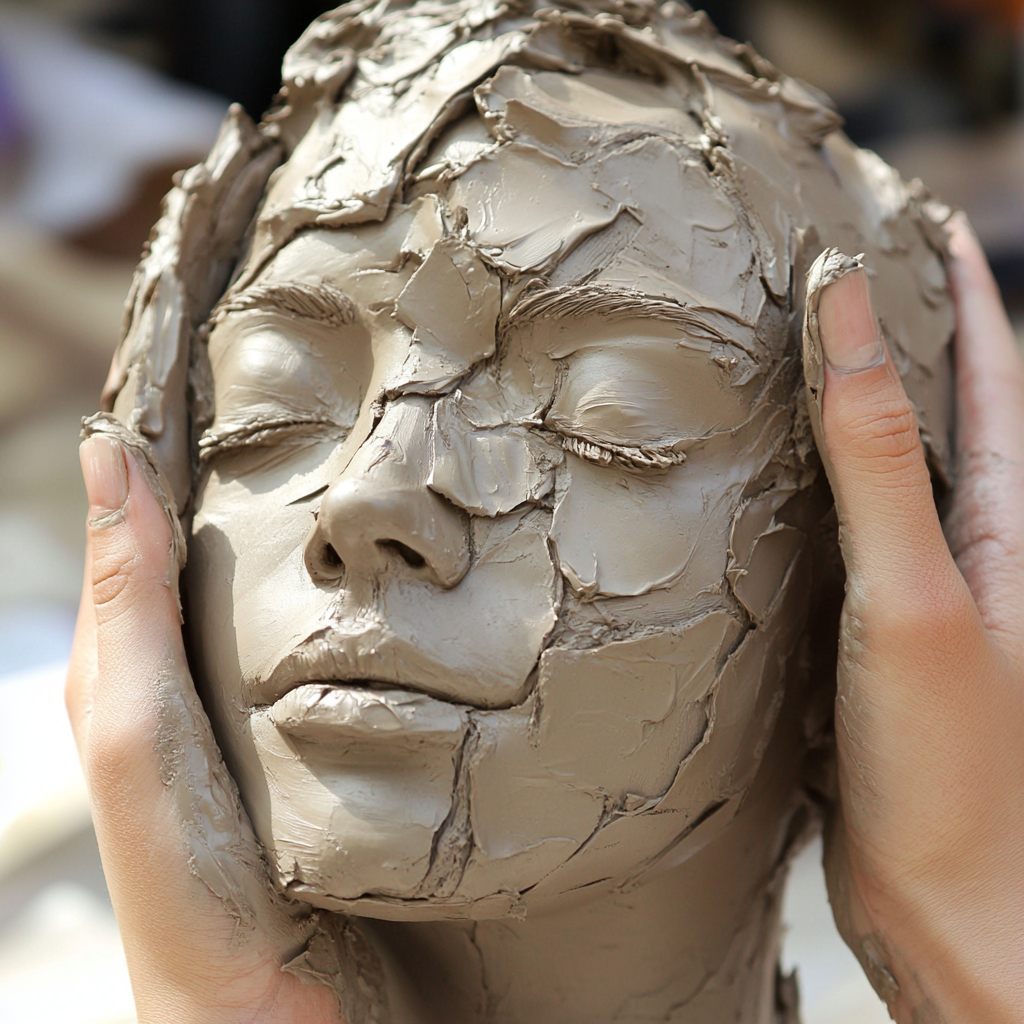
Working with clay provides a tactile, three-dimensional experience that can be especially beneficial for individuals with eating disorders. The malleability of clay allows for constant reshaping and refinement, mirroring the process of personal growth and change in recovery.
Clay sculpting can help patients express emotions that are difficult to verbalize, provide a sense of control, and improve fine motor skills. It can also be used to create representations of challenging aspects of the eating disorder, allowing for a more tangible exploration of these issues.
5. Expressive Painting
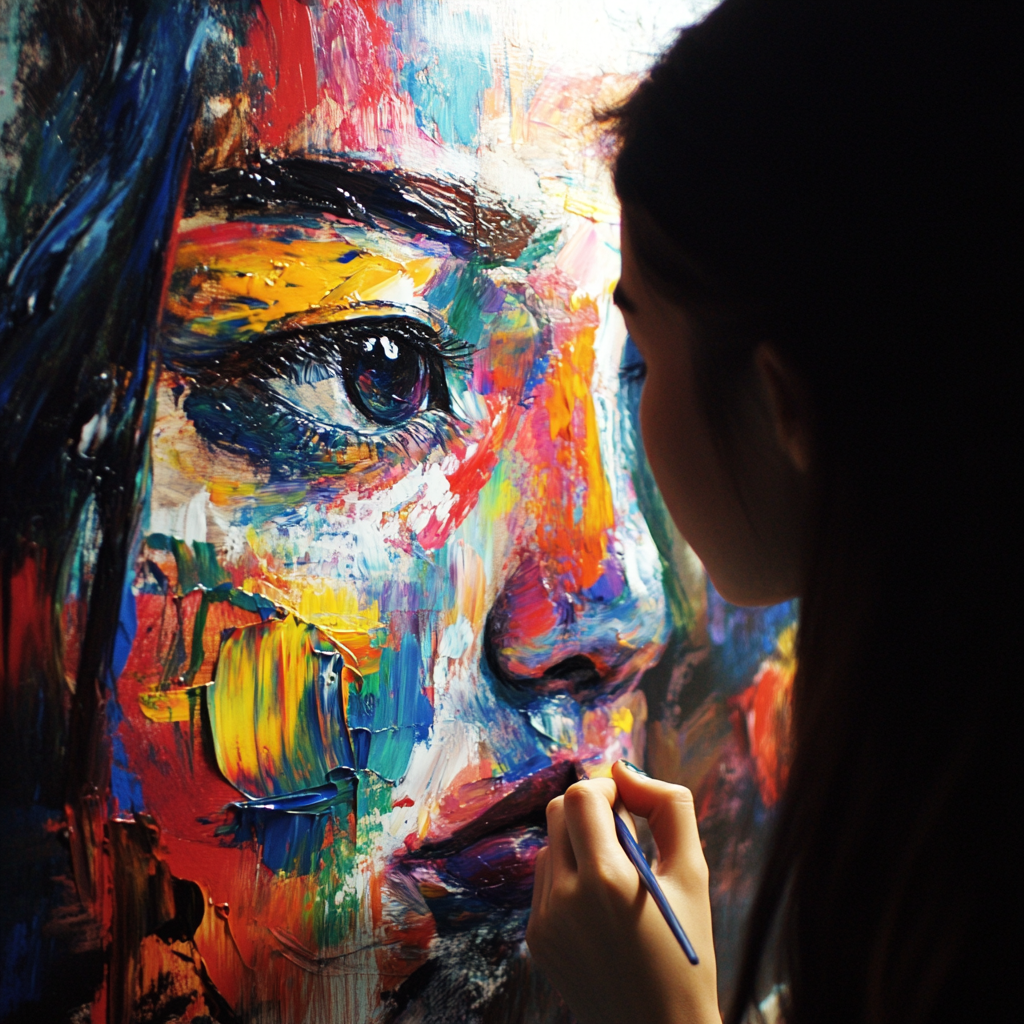
Expressive painting encourages individuals to use color, form, and movement to convey emotions and experiences without concern for artistic skill or realistic representation. This technique can be particularly freeing for individuals with eating disorders, who often struggle with perfectionism and self-criticism.
A study published in the Journal of Eating Disorders found that expressive painting sessions led to significant reductions in anxiety and improvements in mood among patients with anorexia nervosa. The abstract nature of this technique allows for a release of emotions without the pressure of creating a “perfect” image.
6. Art Journaling
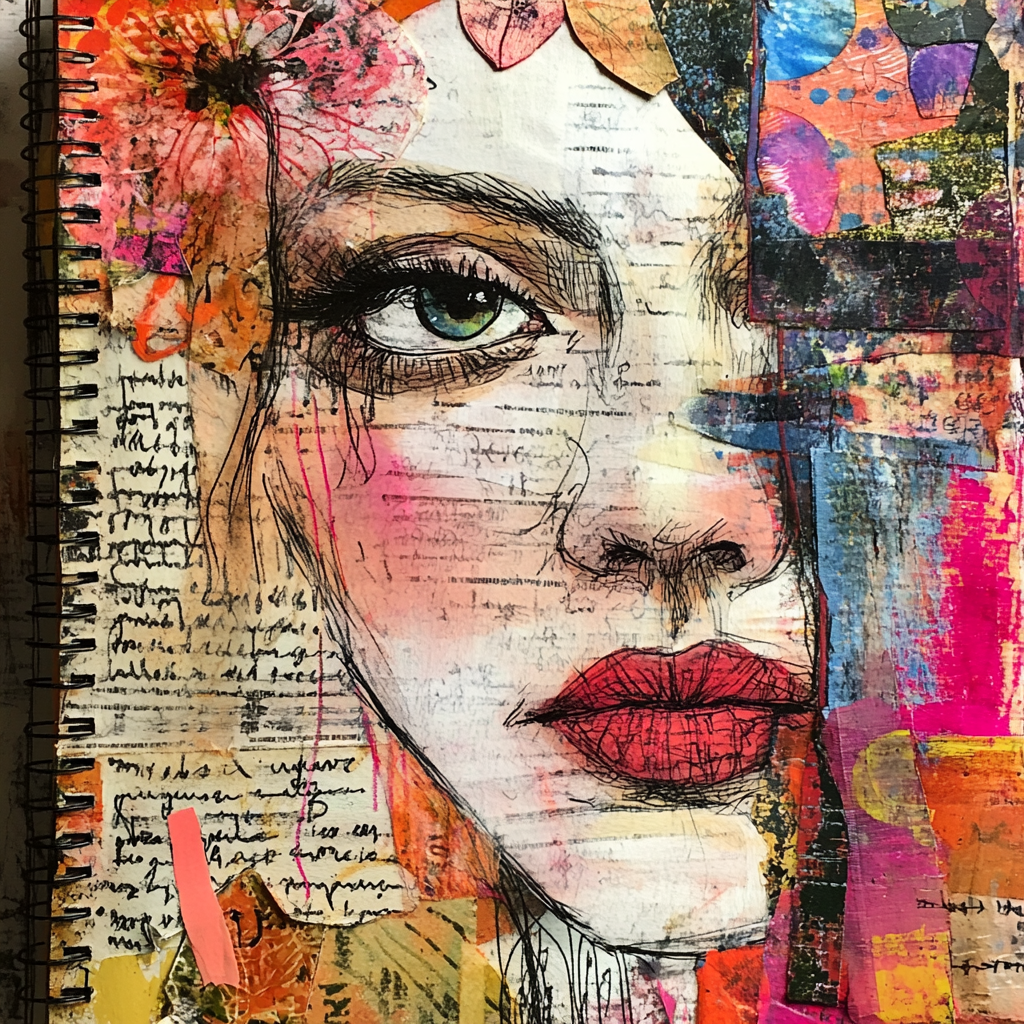
Art journaling combines visual art-making with written reflection, providing a comprehensive tool for self-expression and processing. This technique can be particularly helpful for tracking progress, identifying patterns, and developing coping strategies.
Patients might use their art journals to document daily experiences, explore challenging emotions, or visualize recovery goals. The combination of visual and written elements can provide rich material for discussion in therapy sessions and serve as a tangible record of the recovery journey.
Case Studies: Art Therapy Success Stories
Real-world examples of art therapy’s effectiveness in treating eating disorders can provide valuable insights and inspiration. Let’s explore some case studies that highlight the transformative power of art therapy in eating disorder recovery:
Case Study 1: The Healing Canvas – Adolescent Eating Disorder Treatment
The Penn State Health Adolescent Medicine and Eating Disorder Clinic in Hershey, Pennsylvania, implemented an art therapy intervention called “The Healing Canvas” for adolescents with eating disorders. This program demonstrated significant improvements in participants’ self-esteem, body image perception, and overall emotional well-being.
One participant, a 15-year-old girl named Emily (name changed for privacy), struggled with anorexia nervosa and severe body image issues. Through the art therapy sessions, Emily created a series of self-portraits that evolved over time. Her initial portraits were dark and distorted, reflecting her negative self-perception. As she progressed through the program, her artwork became more colorful and realistic, mirroring her improving self-image and emotional state.
The non-verbal nature of art therapy allowed Emily to express emotions she had difficulty verbalizing, providing a crucial outlet for her feelings. By the end of the program, Emily reported feeling more confident and had made significant progress in her eating disorder recovery.
For more information on this program, visit Penn State Health’s article on art therapy for adolescents with eating disorders.
Case Study 2: The Meadows Ranch – Residential Art Therapy Program
The Meadows Ranch, a residential treatment center for eating disorders in Wickenburg, Arizona, incorporates art therapy as a key component of their comprehensive treatment approach. Their program has shown remarkable success in helping women and girls overcome eating disorders.
One notable case involved a 16-year-old girl, “Jane,” who was admitted with severe anorexia nervosa. Jane participated in various art therapy sessions, including expressive arts therapy and equine therapy. These creative approaches allowed Jane to explore and understand her feelings about food and body image in ways that traditional talk therapy alone had not achieved.
After 60 days of treatment, which included regular art therapy sessions, Jane showed significant improvements. She gained weight, developed healthier coping strategies, and reported enhanced self-esteem and a more positive body image. The art therapy component was crucial in helping Jane express and process her emotions related to her eating disorder.
For more details on The Meadows Ranch and their treatment programs, visit https://www.meadowsranch.com.
Case Study 3: Community-Based Art Therapy Studio for Binge Eating Disorder
A community-based art therapy studio implemented an open studio approach to treat individuals with Binge Eating Disorder (BED). This case study, published in a systematic scoping review, focused on a 30-year-old woman named “Sarah” who had struggled with BED and found traditional therapies ineffective.
The art therapy studio sessions were conducted over 12 weeks, with each session lasting 2 hours. Sarah was encouraged to explore her emotions through art-making without direction or moderation by facilitators. This approach allowed her to work at her own pace and regulate her interactions with others according to her comfort level.
Throughout the program, Sarah created a series ofabstract paintings that reflected her emotional journey. Initially, her artwork was chaotic and dark, mirroring her struggle with BED. As the sessions progressed, her paintings became more structured and vibrant, symbolizing her growing sense of control and emotional well-being.
By the end of the 12-week program, Sarah reported a significant reduction in binge eating episodes and an improvement in her overall emotional well-being. She attributed these changes to the therapeutic process of art-making, which allowed her to express and understand her emotions in a non-verbal manner.
This case study highlights the potential of community-based art therapy studios in treating individuals with BED. The open studio model, with its emphasis on artistic creation and individual expression, provides a unique therapeutic environment that addresses the emotional and psychological aspects of eating disorders.
For more information on the open studio approach to art therapy, you can refer to the systematic scoping review published in the National Center for Biotechnology Information: The Open Studio Approach to Art Therapy: A Systematic Scoping Review.

Integrating Art Therapy into Comprehensive Treatment Plans
While art therapy has proven to be a powerful tool in treating eating disorders, it is most effective when integrated into a comprehensive treatment plan. Here’s how art therapy can be seamlessly incorporated into a holistic approach to eating disorder recovery:
1. Complementing Traditional Therapies
Art therapy works well in conjunction with evidence-based treatments such as Cognitive Behavioral Therapy (CBT) and Dialectical Behavior Therapy (DBT). While these traditional therapies focus on changing thought patterns and behaviors, art therapy can provide a non-verbal outlet for emotions and experiences that may be difficult to articulate in talk therapy sessions.
For example, a patient might create an artwork representing their relationship with food during an art therapy session. This visual representation can then be discussed and analyzed in a subsequent CBT session, providing valuable insights and a starting point for deeper exploration.
2. Enhancing Nutritional Counseling
Art therapy can be a valuable adjunct to nutritional counseling, a crucial component of eating disorder treatment. Patients can use art to explore their feelings about food, body image, and the process of refeeding or normalizing eating patterns.
For instance, a nutritionist might collaborate with an art therapist to design activities that help patients visualize a balanced meal or express their fears and anxieties about certain foods through art. This creative approach can make the challenging process of changing eating habits more engaging and less intimidating.
3. Supporting Family Therapy
Family dynamics often play a significant role in eating disorders, and family therapy is frequently part of the treatment process. Art therapy can be integrated into family sessions to facilitate communication and understanding between family members.
Joint art projects or individual artworks shared in family sessions can provide a non-confrontational way to express feelings and perspectives. This can be particularly helpful for adolescents who may struggle to verbalize their emotions to their parents or siblings.
The art therapy activities for couples blog offers insights into relationship-focused art therapy techniques that can be adapted for family therapy settings.
4. Addressing Co-occurring Conditions
Many individuals with eating disorders also struggle with co-occurring mental health conditions such as anxiety, depression, or trauma. Art therapy can be an effective tool in addressing these complex, interrelated issues.
For example, a patient with both an eating disorder and a history of trauma might benefit from trauma-focused art therapy techniques. The 10 art therapy exercises for trauma recovery resource provides valuable techniques that can be adapted for this purpose.
5. Facilitating Group Therapy
Art therapy can be effectively implemented in group settings, fostering a sense of community and shared experience among individuals in recovery. Group art therapy sessions can help reduce feelings of isolation and provide opportunities for mutual support and inspiration.
Collaborative art projects, such as creating a group mural representing recovery, can be particularly powerful in building connections and fostering a sense of hope among participants.
6. Supporting Aftercare and Relapse Prevention
As patients transition from intensive treatment to less structured care, art therapy can provide ongoing support and tools for maintaining recovery. Patients can continue to use art-making as a coping mechanism and a means of self-expression long after formal treatment has ended.
Art journaling, in particular, can be a valuable tool for tracking progress, identifying potential triggers, and maintaining connection with the recovery process. The skills learned in art therapy sessions can serve as lifelong resources for emotional regulation and self-reflection.
For professionals interested in gaining a comprehensive understanding of how to integrate art therapy into eating disorder treatment, the Art Therapy Practitioner course offers in-depth training and practical strategies.

Conclusion
Art therapy has emerged as a powerful and effective tool in the treatment of eating disorders. Its ability to facilitate non-verbal expression, improve body image, reduce stress, enhance self-awareness, and empower individuals makes it a valuable component of comprehensive eating disorder treatment plans.
Through various techniques such as body mapping, mandala drawing, collage making, clay sculpting, and expressive painting, art therapy provides individuals with eating disorders a unique avenue for exploring and processing their emotions, experiences, and challenges. The case studies presented demonstrate the real-world impact of art therapy in helping individuals overcome eating disorders and achieve lasting recovery.
As the field of eating disorder treatment continues to evolve, the integration of art therapy with traditional therapies, nutritional counseling, family therapy, and group interventions offers a holistic approach that addresses the complex nature of these disorders. By providing tools for ongoing self-expression and emotional regulation, art therapy also plays a crucial role in aftercare and relapse prevention.
For healthcare professionals, therapists, and individuals interested in exploring the transformative power of art therapy in eating disorder treatment, resources such as the 50 art therapy exercises for children adults and seniors and the making a living in art products offer valuable insights and practical strategies.
As we continue to recognize the importance of creative and expressive therapies in mental health treatment, art therapy stands out as a beacon of hope for those struggling with eating disorders. By harnessing the healing power of artistic expression, individuals can embark on a journey of self-discovery, healing, and lasting recovery.



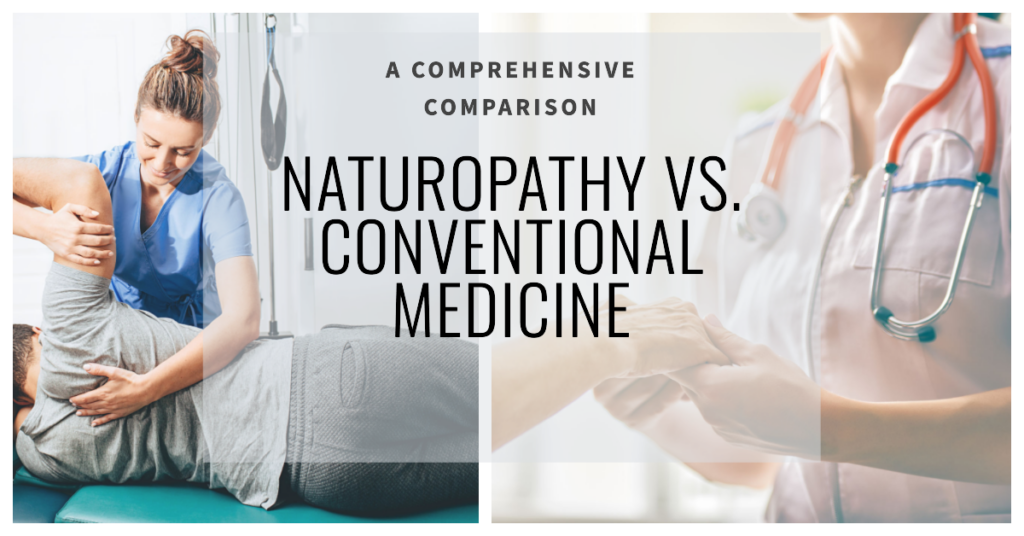
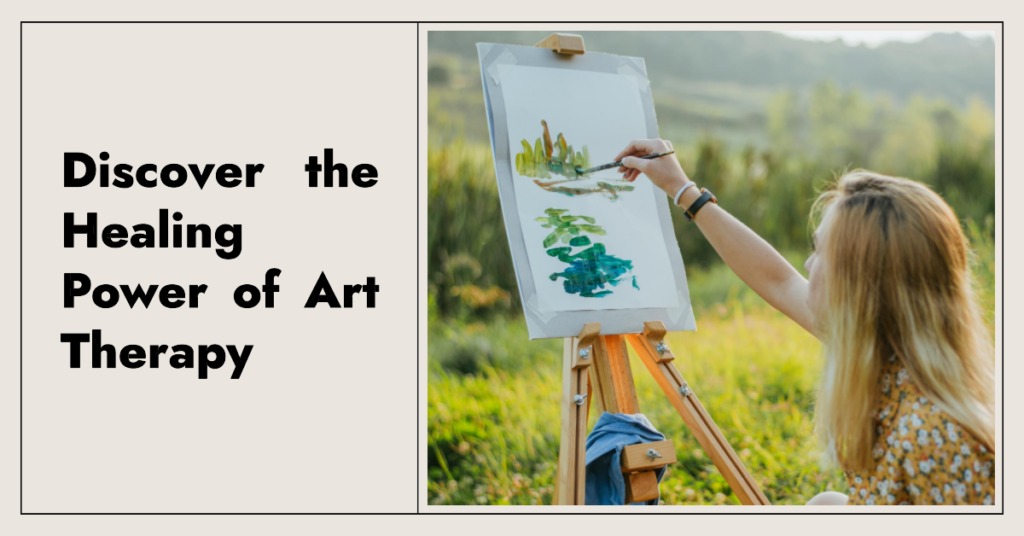
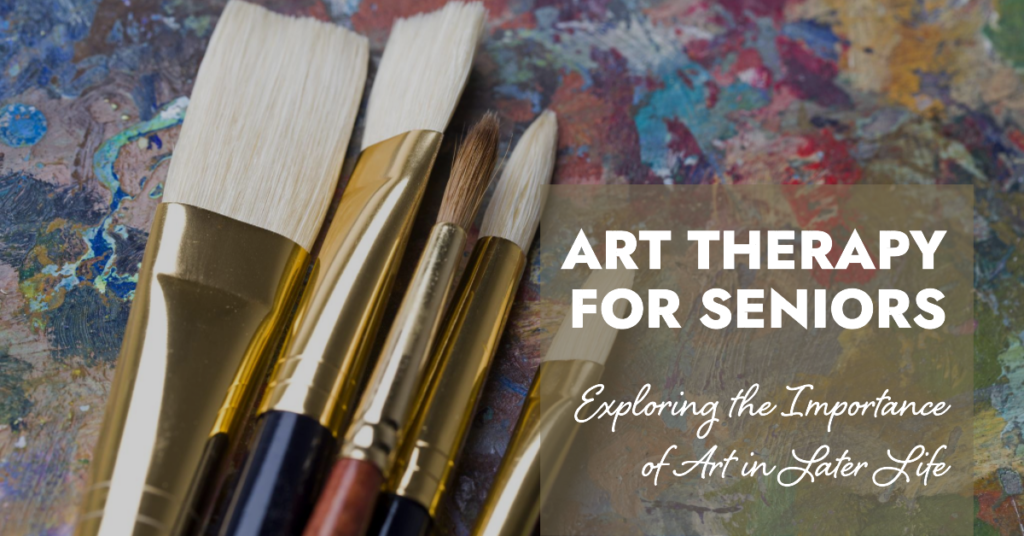


Responses